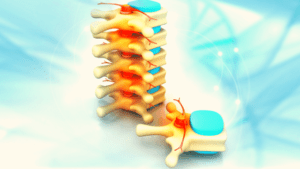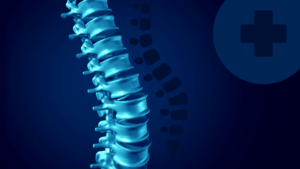Now that CPT coding updates are being the talk of the show, let’s not forget about the modifiers attached to them! Medical billing and coding process needs to have better tactics to get better reimbursement rates for the services rendered. However, it’s quite tricky to set right modifiers for accurate coding sets.
New CPT coding sets have emerged and so are the modifiers. Modifiers are very essential in the medical billing and coding part. They can save the bills from getting rejected if correctly calculated. Coding modifiers are codes that supply additional information about a CPT or HCPCS codes if a procedure becomes complicated than the normal or procedure performed under unusual circumstances.
Codes are strictly determined by the documentation held in the medical records. If the procedure isn’t properly documented, the coding process becomes a failure. While medical billing and coding procedures, it’s very essential to contain codes in the claims that have the evidence of medical records.
What is a CPT Code Modifier?
- CPT coding modifiers are two digit codes actually attached to CPT to provide additional information on evaluation and management procedures performed during the office visit.
What is a HCPCS Code Modifier?
- CMS develops HCPCS codes. CMS refers to Centers for Medicare and Medicaid Services. Though CPT codes are primarily used with Medicaid and Medicare including private insurance companies, there are situations where HCPCS codes are preferred instead of CPT.
- HCPCS codes are very commonly used for transportation services, outpatient prospective payment system services, durable equipment for medicine, devices used for orthotic procedures.
- HCPCS modifiers are used by both Medicare and other insurance companies depending on situation. They include two alpha digits, two alphanumeric characters and single alpha digit.
CPT Modifiers vs HCPCS Modifiers:
- Accurate use of modifiers is determined by insurance companies’ preference. Few circumstances allow CPT codes to further define HCPCS modifiers.
- For instance, in order to describe the side of the body, the procedure is performed using left modifiers-LT or the right modifiers-RT. Well, HCPCS modifiers are also used to describe HCPCS codes as well.
ICD-10 Coding and Modifiers:
- Prior to assigning a modifier to explain where the procedure happened, it’s crucial to check if ICD-10 code is ready to provide the required information.
- For instance, if the pain in right lower leg is assigned with modifier M79.661, the pain in lower left leg would be M79.662.
- Specific codes are always required for diagnosis where medical billing and coding teams must be aware of these coding requirements.
- Modifiers might not be needed if description of the procedure is included while coding ICD-10.
Commonly used CPT Code Modifiers:
1.CPT Modifier 22 – Increased Procedural Services
- Mostly, Modifier 22 is used to describe the highly increased workload that’s connected with the procedures. This is a modifier that’s to be used only in exceptional cases where insurance companies definitely would require clear documentation before services are made.
- Modifier 22 can also be used during surgeries and procedures where there’s an increased technical difficulty depending on emergency and severe health conditions of patients.
- It’s used when there’s an unusual or unexpected and excessive hemorrhaging while performing a procedure.
2.CPT Modifier 25 – Significant and Separately Identified Services:
- CPT Modifier 25 is used when a significant and separately identifiable evaluation and management (E/M) services performed by the same physician on the same day of service.
- This modifier 25 can also be used along with E/M codes.
- The accurate use of a 25 modifier is actually indicated when there are two distinct diagnoses made during the encounter or visit.
- Under correct and right circumstances, only one diagnosis would be required. Medical billing and coding should not become a confusing part while choosing right modifiers for particular diagnosis.
3.CPT Modifier 26 – Professional Component:
- CPT Modifier 26 simplifies and indicates the professional service of a CPT that has a professional and technical definition.
- In case if an Orthopedist or Orthopedic professional receives an x-ray and performs diagnosis based on the report, the right CPT code would be 73070-26 because the x-ray was taken elsewhere. Modifier 26 is attached along.
- The CPT code 73070 without or excluding the modifier indicates that the x-ray and its interpretation is held in the same professional’s office.
4.CPT Modifier 50 – Bilateral Procedure:
- CPT modifier 50 commonly indicates the procedures performed both sides of the body.
- Medical billing and coding teams should ensure and check if the definition of CPT bilaterally is not mentioned already in the code definition before applying this modifier.
5.CPT Modifier 51- Multiple Procedures:
- CPT modifier 51 indicates numerous or multiple procedures performed by the same healthcare professional in the same session.
- The procedure with highest reimbursement is expected to be listed initially . Additional or extra procedures listed for reimbursement value with the modifier.
- If a patient arrives in for multiple x-rays, the first x-ray with the highest reimbursement would be coded initially with the CPT, and all others X-rays would be amended with modifier 51 subsequently.
6.CPT Modifier 52 – Reduced Services:
- Modifier52 indicates whether the physician or healthcare professional has been elected to discontinue a service or procedure.
- Certainly, this modifier is attached to an evaluation and management service if an examination requires to be discontinued because of situation demands and patient non-cooperation.
7.CPT Modifier 59 – Distinct Procedural Service:
- CPT Modifier 59 is used usually during circumstances where two CPT codes are not normally reported together on the same day of service by the same healthcare professional that’s necessary because of few situations. Required documentation is must that supports entire procedure on the same day or different location or if any other system involved.
Hope you got information on Modifiers and uses. For more information on healthcare, please subscribe our blog. Do comment below your suggestions. Follow us on Facebook, Instagram, LinkedIn and Twitter. We have a You Tube Channel too!




